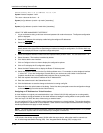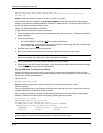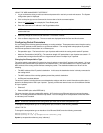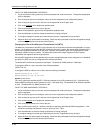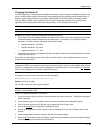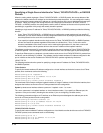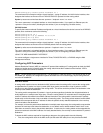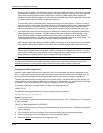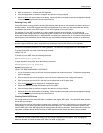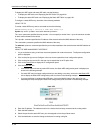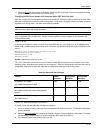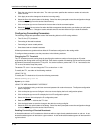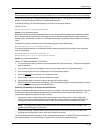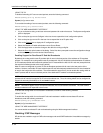
Configuring IP
HP9300(config)# ip tacacs source-interface ve 1
The commands in this example configure virtual interface 1, assign IP address 10.0.0.3/24 to the interface, then
designate the interface as the source for all TACACS/TACACS+ packets from the routing switch.
Syntax: ip tacacs source-interface ethernet <portnum> | loopback <num> | ve <num>
The <num> parameter is a loopback interface or virtual interface number. If you specify an Ethernet port, the
<portnum> is the port’s number (including the slot number, if you are configuring a chassis device).
RADIUS Packets
To specify the lowest-numbered IP address configured on a virtual interface as the device’s source for all RADIUS
packets, enter commands such as the following:
HP9300(config)# int ve 1
HP9300(config-vif-1)# ip address 10.0.0.3/24
HP9300(config-vif-1)# exit
HP9300(config)# ip radius source-interface ve 1
The commands in this example configure virtual interface 1, assign IP address 10.0.0.3/24 to the interface, then
designate the interface as the source for all RADIUS packets from the routing switch.
Syntax: ip radius source-interface ethernet <portnum> | loopback <num> | ve <num>
The <num> parameter is a loopback interface or virtual interface number. If you specify an Ethernet port, the
<portnum> is the port’s number (including the slot number, if you are configuring a chassis device).
USING THE WEB MANAGEMENT INTERFACE
You cannot configure a single source interface for Telnet, TACACS/TACACS+, or RADIUS using the Web
management interface.
Configuring ARP Parameters
Address Resolution Protocol (ARP) is a standard IP protocol that enables an IP routing switch to obtain the MAC
address of another device’s interface when the routing switch knows the IP address of the interface. ARP is
enabled by default and cannot be disabled.
NOTE: The HP 6208M-SX also supports ARP. The description in “How ARP Works” also applies to ARP on the
HP 6208M-SX. However, the configuration options described later in this section apply only to routing switches,
not to the HP 6208M-SX.
How ARP Works
A routing switch needs to know a destination’s MAC address when forwarding traffic, because the routing switch
encapsulates the IP packet in a Layer 2 packet (MAC layer packet) and sends the Layer 2 packet to a MAC
interface on a device directly attached to the routing switch. The device can be the packet’s final destination or the
next-hop router toward the destination.
The routing switch encapsulates IP packets in Layer 2 packets regardless of whether the ultimate destination is
locally attached or is multiple router hops away. Since the routing switch’s IP route table and IP forwarding cache
contain IP address information but not MAC address information, the routing switch cannot forward IP packets
based solely on the information in the route table or forwarding cache. The routing switch needs to know the MAC
address that corresponds with the IP address of either the packet’s locally attached destination or the next-hop
router that leads to the destination.
For example, to forward a packet whose destination is multiple router hops away, the routing switch must send the
packet to the next-hop router toward its destination, or to a default route or default network route if the IP route
table does not contain a route to the packet’s destination. In each case, the routing switch must encapsulate the
packet and address it to the MAC address of a locally attached device, the next-hop router toward the IP packet’s
destination.
To obtain the MAC address required for forwarding a datagram, the routing switch does the following:
• First, the routing switch looks in the ARP cache (not the static ARP table) for an entry that lists the MAC
6 - 27




